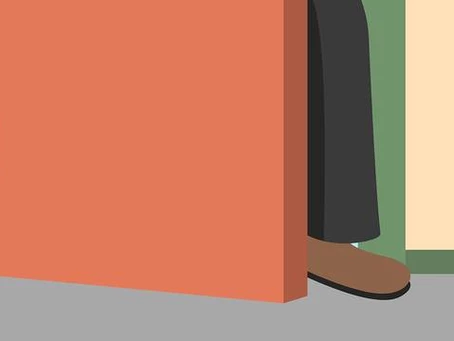
Leveraging the hacks of psychology in the trade of marketing has been an age old occurrence. Rewind back to the time of door to door marketing. To ensure being heard, marketers would quite literally put a ‘foot in the door’.
But figuratively, the term has been used to describe a psychological bias that was first depicted by Jonathan Freedman and Scott Fraser. It states that consumers are more likely to accept a bigger request if marketers can get them to comply with a smaller request beforehand.
In 1966, was when the first experiment exemplifying the ‘foot-in-the-door’ technique was carried out. The stated two men of Stanford University, made a small request via telephone to subjects asking them to report on what type of household cleaning products they use. The second and bigger request was for subjects to allow a researcher into their home to examine their household products brands and usage. When compared with the control group, who was only asked for an in-home product analysis, subjects who had first responded positively to the first request were 135% more likely to respond positively to the second request.
Since then, the technique has made its way into different aspects of our culture.
Digging deeper – Understanding ‘Foot-in-the-door’
One theory as to why this works is that behavior can actually shape one’s attitude. For example, if a marketer can convince a consumer to sign a petition for safe driving, this ‘behavior’ of the consumer will shape their ‘attitude’ towards the cause of safe driving and they will be much more likely to comply to a bigger request of the same kind, say the erection of a safe driving sign board close to their house.
This is simply a “If I did it, I can do it again” philosophy that plays with consumers’ minds. A steadfast rule of this mechanism is that the first action of the consumers must be voluntary. If the first action was forced somehow, they will not feel tempted to repeat it.
But now that the concept of door to door marketing is long gone, how exactly do brands take advantage of this technique in their day to day marketing?
The craft of persuasion – Applying ‘Foot-in-the-door’
Brands that wish to adopt the ‘foot-in-the-door’ technique to their marketing do so by following a distinct and succinct 3 – step outline that forms the root of the technique. This includes –
Deciding what the smaller initial request will be and what the second bigger request will be. The initial request is usually something that users easily say yes to, while the bigger request could be something more sales and conversion based. For example, asking for the customers’ email address could be the first request and then asking them to download the brand’s software, or buy their product could be the second request.
Pitching the smaller request. Once customers agree, a way is created to pitch the second request. Usually the second means is inculcated in the first request. Like in our example, since the email address is already asked in the initial request, and a means (mail) to pitch the second one is created.
Pitching the second, bigger request. The bigger request is usually backed with the best of marketing, content, testimonials etc. since it is a larger ask.
A hack well used – Examples of ‘Foot-in-the-door’
There are many examples of this psychological hack being used by brands in our day to day g experiences, that often go unnoticed.
OTT platforms the ‘foot-in-the-door’ technique to increase their consumer’s screen time and enhance their experience. The ‘Recommended for you’ list based on your previous choices (first request) are the second bigger request that consumers are more likely to opt for since they have opted for something similar before.
Bigger online stores like Amazon and nearly every clothing retailer online provide sections like ‘customers who bought this also viewed’ or ‘you may also like’ or ‘view similar’. This is a use of the aforementioned psychological technique where the initial request is the first purchase or the initial tap on a product and the second request is perusing through or buying similar products.
A basic way in which nearly every online brand uses ‘foot-in-the-door’ is for building their mailing list. Brands could ask consumers to fill out a survey (first request) and then subscribe to their email list (second list). Another, is the common practice of a ‘free trial’ and then a subscription.
Charitable organizations first ask potential donors for a small request, like signing a petition.
Then, they ask them for a donation. Similarly, they also make use of the hack by asking people for a small donation, then asking them for their contact information to send them a monthly email, before asking for a larger donation or a bigger investment in the organizations.
Conclusion – The Takeaway
A much more subtle technique than it sounds, ‘foot-in-the-door’ is a great marketing hack that has survived the test of time and stuck around since the time to door-to-door marketers.
Tricking the consumer’s mind into believing that they want to opt for a second product or service just because they previously opted for something similar out of their free will, forms the crux of the technique. Brands get their ‘foot-in the-door’ before you slam the door in their faces to ensure they get represented.










